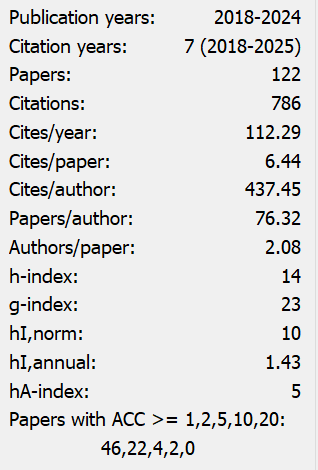Funding Challenges of Small and Medium Enterprises in Transition Countries: Kosovo Case Study
Abstract
SMEs play a very important role in the development of economies of different countries and they are now considered as a key factor of economic development. They affect unemployment, promote social welfare and can be treated as a promoter of economic growth. The paper addresses the role and importance of financing SMEs in transition countries including Kosovo. The study examines the key factors affecting the increase of SME financing from external sources, namely bank lending since other external sources of financing in Kosovo are scarce and almost non-existent. For the purposes of this paper, data from 215 SMEs surveyed in Kosovo were used, randomly distributed across manufacturing, services and commerce sectors. Data collection was done in the period January-April 2016, and their processing was carried out with SPSS (Social Package for Social Science). In order to have more consistent information during data processing, certain models were used in the paper: Paried-Samples T Test, which was used to investigate the difference between two sets of averages, which indicates that the business plan for the enterprise is relevant to bank loan access. The One Way Anova model was used to test the differences between two or more averages, and through this model is proved that high-profit enterprises have achieved easier access to bank loans. Also following the One Way Anova and Post Hoc LSD test, there were found differences between groups of enterprise by their types, activity and age. The research shows that enterprises with older ages have been able to obtain more easily bank loans. The One Way Anova and Welch-Brown-Forthyse test was used to deal with the level of education of business owners, whereby it was found that owners with a high level of education had easier access to bank loans. Through the Indepedent Samples T Test technique it was found that there is a significant difference between the age groups of the owners based on the mean and standard deviation.
References
Ayyagari, M., Beck, T., & Demirgüç-Kunt, A. (2007). Small and medium enterprises across the globe. Small Business Economics, 29, 415-434. https://doi.org/10.1007/s11187-006-9002-5
Ayyagari, M., Demirgüç-Kunt, A., & Maksimovic, V. (2008). How important are financing constraints? The role of finance in the business environment. The World Bank Economic Review, 22, 483-516. https://doi.org/10.1093/wber/lhn018
Beck, T., & Demirgüç-Kunt, A. (2006). Small and medium-size enterprises: Access to finance as a growth constraint. Journal of Banking & Finance, 30, 2931-2943. https://doi.org/10.1016/j.jbankfin.2006. 05.009
Beck, T., Demirgüç-Kunt, A., & Honohan, P. (2009). Access to financial services: Measurement, impact, and policies. The World Bank Research Observer, 24, 119-145. http://doi.org/10.1093/wbro/lkn008
Beck, T., Demirgüç-Kunt, A., Laeven, L., & Maksimovic, V. (2006). The determinants of financing obstacles. Journal of International Money and Finance, 25, 932-952. https://doi.org/10.1016/j.jimonfin. 2006.07.005
De la Torre, A., Ize, A. & Schmukler, S. L. (2011). Financial development in Latin America and the Caribbean: the road ahead. World Bank Publications. https://doi.org/10.1596/978-0-8213-8847-1
Duygan-Bump, Levkov, & Montoriol-Garriga, (2015). Financing constraints and unemployment: Evidence from the great recession. Journal of Monetary Economics, 75, 89-105. https://doi.org/10.1016/j.jmoneco.2014.12.011
Galindo, Arturo J., Fabio Schiantarelli, & Andrew Weiss (2007). Does Financial Reform Improve the Allocation of Investment? Micro Evidence from Developing Countries. Journal of Development Economics, 83(2), 562-587. https://doi.org/10.1016/j.jdeveco.2005.09.008
Nyugen T.A.H. (2017). Financing Constraints on SMES in Emerging Markets: Does Financial Literacy Matter? Review of Socio-Economic Perspectives, 2(2), 53-65. https://doi.org/10.19275/RSEP017
Harvie, Ch., Narjoko, D, & Oum, S. (2013), Small and Medium Enterprises’ Access to Finance: Evidence from Selected Asian Economics. ERIA-DP-23. Economic Research Institute for ASEAN and East Asia.
Hughes, A. (2009). Hunting the snark: Some reflections on the U.K. experience of support for the small business sector. Innovation: Management, Policy and Practice, 11(1), 114-126. https://doi.org/10.5172/impp.453.11.1.114
Shen, Shen, Xu, Bai, Shen, Y., Shen, M., Xu, Z., & Bai, Y. (2009). Bank size and small- and medium-sized enterprise (SME) lending: Evidence from China. World Development, 37(4), 800-811. https://doi.org/10.1016/j.worlddev.2008.07.014
Tmava, Q., Peci. F., & Luboteni, G. (2013). The Role of Banks in Small and Medium Enterprises Financing: A Case Study from Kosovo. International Journal of Economics and Finance, 5(12), 2013 https://doi.org/10.5539/ijef.v5n12p94
Vo, X. V. (2017). Determinants of capital structure in emerging markets: Evidence from Vietnam. Research in International Business and Finance, 40, 105-113. https://doi.org/10.1016/j.ribaf.2016.12.001

This work is licensed under a Creative Commons Attribution 4.0 International License.
Copyright for this article is retained by the author(s), with first publication rights granted to the journal.
This is an open-access article distributed under the terms and conditions of the Creative Commons Attribution license (http://creativecommons.org/licenses/by/4.0/).


























